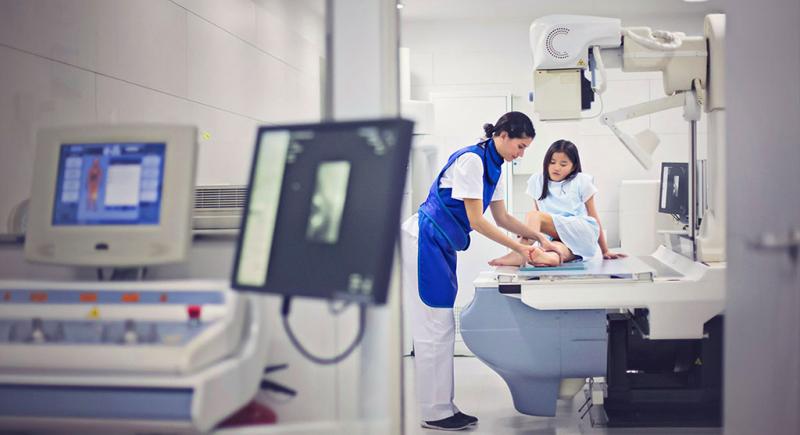Rise of Outpatient Imaging Centers
Over the past decade, there has been a significant rise in the number of outpatient imaging centers in the U.S. While many hospitals still provide imaging services, hundreds of private centers have opened across the country focused solely on diagnostic imaging. These centers allow patients to get MRIs, CT scans, X-rays, ultrasounds, and other common imaging tests without having to go to an emergency room or schedule an appointment at their doctor's office.
The growth of outpatient imaging centers is largely driven by their convenience and lower costs compared to hospital-based imaging departments. Centers keep extended hours, including evenings and weekends, making it easier for patients to fit appointments into their schedules. They also tend to bill insurance companies at lower rates than hospitals for the same tests. This has helped fuel their growing popularity as an alternative to hospital imaging.
Transition to Digital Technology
All areas of medical imaging have transitioned from analog film-based systems to digital technologies over the last 20 years. This transition has brought several important changes. Digital images can be instantly viewed, transmitted, stored, and recalled electronically. Radiologists and physicians no longer need physical films shipped between locations and can read scans from any computer.
Digital imaging has also enabled new advanced applications like 3D reconstructions, fusion of multimodality scans like PET/CT, and image-guided procedures. Workflow has been streamlined as images flow digitally rather than relying on manual handling and shipping of films. Overall image quality has improved, and radiation dose has decreased for many exams due to technology advancements optimized for digital formats. While there was initially a large upfront cost, digital has now become the standard worldwide.
Rising Demand and Growing Utilization
Demand for medical imaging services continues rising each year in the U.S., driven mainly by an aging population and advancements allowing imaging to address more conditions than ever before. Common scans like MRI, CT, X-ray, ultrasound, and nuclear medicine exams are all increasing in volume. New imaging-guided procedures are being developed as an alternative to surgery when possible.
Beyond demographic trends, imaging utilization is also rising due to overutilization in some cases. While appropriate use criteria and imaging appropriateness tools have helped address this, further optimization is still needed nationwide. Expanding insurance coverage has also lifted some barriers to care, though high deductible health plans have introduced new considerations. Despite these dynamics, medical imaging remains a critical component of modern diagnostics, treatment planning, and minimally invasive care.
Artificial Intelligence Applications Emerge
Perhaps the most anticipated area of growth is the integration of artificial intelligence (AI) algorithms and machine learning into clinical imaging workflows. Some applications already in use assist in automating routine tasks like labeling and categorizing scans. More advanced AI tools under development aim to interpret scans and even generate preliminary radiology reports by automatically detecting and characterizing findings.
While not intended as a replacement for radiologists, these AI applications have potential to dramatically increase productivity and efficiency. They may help reduce reading time for routine exams to allow radiologists to focus on more complex cases. AI could also expand access to imaging expertise in underserved locations. As more clinical data becomes available to train algorithms, AI capabilities are certain to evolve rapidly in the next decade with the goal of enhancing rather than replacing radiologists. Integration of AI into daily practice remains a work in progress but holds great promise to make imaging more valuable.
Regulatory and Reimbursement Landscape
Regulatory oversight and reimbursement policy heavily impact in U.S. Imaging Services. The FDA regulates new imaging equipment and contrast agents to ensure safety and effectiveness. CMS determines reimbursement amounts and appropriate use guidelines which influence utilization and availability of different scan types nationally. Private insurers also set their own coverage policies and rates paid.
Obtaining FDA approval for newCT, MRI, ultrasound, PET, or other systems requires extensive clinical testing which large vendors have dedicated research departments. However, smaller innovations and software upgrades face a complex regulatory pathway for clearance. Reimbursement changes like yearly fee schedule updates or new CPT codes can significantly alter market demands. A mobile MRI company launching today faces different challenges than a hospital system upgrading decades-old equipment. Navigating this complex policy landscape will remain crucial for the imaging industry.
Evolving Role in Value-Based Care
As the entire U.S. healthcare system shifts to value-based models that emphasize outcomes over fee-for-service volumes, medical imaging has an opportunity to demonstrate its clinical value like never before. Imaging companies and hospitals are investing in data analytics platforms that draw connections between specific scan usage and surgical findings, diagnostic accuracy, length of stay, readmission rates, complications avoided and more.
Imaging providers partnering with ACOs, bundled payment groups and other risk-bearing organizations now have new motivations to validate the impact imaging has on overall patient care and costs. Standardization of quality metrics across specialties and payers also encourages high performance. With millions of scans conducted annually, even minor optimization of imaging protocols and appropriateness could significantly boost value of care in the U.S. Moving forward, this transition may reshape not only how imaging is utilized and delivered but how its true worth is measured.
In summary, while U.S. Imaging Services Market faces many changes on its horizon from technological to policy factors, the overall outlook remains positive as the specialty continues modernizing, integrating new tools, and enhancing its value within the evolving healthcare landscape. Convenience innovations, collaboration with artificial intelligence, responsiveness to regulations and incentives will all influence how imaging services adapt to increasing demand and high expectations for optimal patient outcomes in the coming years.
Get more insights on U.S. Imaging Services
About Author:
Money Singh is a seasoned content writer with over four years of experience in the market research sector. Her expertise spans various industries, including food and beverages, biotechnology, chemical and materials, defense and aerospace, consumer goods, etc.
